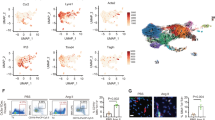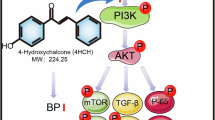Abstract
Aim:
Aliskiren (ALK) is a renin inhibitor that has been used in the treatment of hypertension. The aim of this study was to determine whether ALK could ameliorate pressure overload-induced heart hypertrophy and fibrosis, and to elucidate the mechanisms of action.
Methods:
Transverse aortic constriction (TAC) was performed in mice to induce heart pressure overload. ALK (150 mg·kg−1·d−1, po), the autophagy inhibitor 3-methyladenine (10 mg·kg−1 per week, ip) or the PKCβI inhibitor LY333531 (1 mg·kg−1·d-1, po) was administered to the mice for 4 weeks. Heart hypertrophy, fibrosis and function were evaluated based on echocardiography, histological and biochemical measurements. Mechanically stretched cardiomyocytes of rats were used for in vitro experiments. The levels of signaling proteins were measured using Western blotting, while the expression of the relevant genes was analyzed using real-time QRT-PCR.
Results:
TAC induced marked heart hypertrophy and fibrosis, accompanied by high levels of Ang II in plasma and heart, and by PKCβI/α and ERK1/2 phosphorylation in heart. Meanwhile, TAC induced autophagic responses in heart, i.e. increases in autophagic structures, expression of Atg5 and Atg16 L1 mRNAs and LC3-II and Beclin-1 proteins. These pathological alterations in TAC-mice were significantly ameliorated or blocked by ALK administration. In TAC-mice, 3-methyladenine administration also ameliorated heart hypertrophy, fibrosis and dysfunction, while LY333531 administration inhibited ERK phosphorylation and autophagy in heart. In mechanically stretched cardiomyocytes, CGP53353 (a PKCβI inhibitor) prevented ERK phosphorylation and autophagic responses, while U0126 (an ERK inhibitor) blocked autophagic responses.
Conclusion:
ALK ameliorates heart hypertrophy, fibrosis and dysfunction in the mouse model in setting of chronic pressure overload, via suppressing Ang II-PKCβI-ERK1/2-regulated autophagy.
Similar content being viewed by others
Log in or create a free account to read this content
Gain free access to this article, as well as selected content from this journal and more on nature.com
or
References
Frohlich ED, Apstein C, Chobanian AV, Devereux RB, Dustan HP, Dzau V, et al. The heart in hypertension. N Engl J Med 1992; 327: 998–1008.
Dahlof B, Devereux RB, Kjeldsen SE, Julius S, Beevers G, de Faire U, et al. Cardiovascular morbidity and mortality in the Losartan Intervention For Endpoint reduction in hypertension study (LIFE): a randomised trial against atenolol. Lancet 2002; 359: 995–1003.
de Simone G, Gottdiener JS, Chinali M, Maurer MS . Left ventricular mass predicts heart failure not related to previous myocardial infarction: the Cardiovascular Health Study. Eur Heart J 2008; 29: 741–7.
Roger VL, Go AS, Lloyd-Jones DM, Benjamin EJ, Berry JD, Borden WB, et al. Heart disease and stroke statistics — 2012 update: a report from the American Heart Association. Circulation 2012; 125: e2–e220.
Frey N, Olson EN . Cardiac hypertrophy: the good, the bad, and the ugly. Annu Rev Physiol 2003; 65: 45–79.
Kjeldsen SE, Dahlof B, Devereux RB, Julius S, Aurup P, Edelman J, et al. Effects of losartan on cardiovascular morbidity and mortality in patients with isolated systolic hypertension and left ventricular hypertrophy: a Losartan Intervention for Endpoint Reduction (LIFE) substudy. JAMA 2002; 288: 1491–8.
Lang CC, Struthers AD . Targeting the renin-angiotensin-aldosterone system in heart failure. Nat Rev Cardiol 2013; 10: 125–34.
Siragy HM . Rationale for combining a direct renin inhibitor with other renin-angiotensin system blockers. Focus on aliskiren and combinations. Cardiovasc Drugs Ther 2011; 25: 87–97.
Shah AM, Shin SH, Takeuchi M, Skali H, Desai AS, Kober L, et al. Left ventricular systolic and diastolic function, remodelling, and clinical outcomes among patients with diabetes following myocardial infarction and the influence of direct renin inhibition with aliskiren. Eur J Heart Failure 2012; 14: 185–92.
Harel Z, Gilbert C, Wald R, Bell C, Perl J, Juurlink D, et al. The effect of combination treatment with aliskiren and blockers of the renin-angiotensin system on hyperkalaemia and acute kidney injury: systematic review and meta-analysis. BMJ 2012; 344: e42.
Angeli F, Reboldi G, Mazzotta G, Poltronieri C, Garofoli M, Ramundo E, et al. Safety and efficacy of aliskiren in the treatment of hypertension and associated clinical conditions. Curr Drug Saf 2012; 7: 76–85.
Zhu H, Tannous P, Johnstone JL, Kong Y, Shelton JM, Richardson JA, et al. Cardiac autophagy is a maladaptive response to hemodynamic stress. J Clin Invest 2007; 117: 1782–93.
Rothermel BA, Hill JA . Autophagy in load-induced heart disease. Circ Res 2008; 103: 1363–9.
Steinberg SF . Cardiac actions of protein kinase C isoforms. Physiology (Bethesda) 2012; 27: 130–9.
Liu Q, Molkentin JD . Protein kinase Calpha as a heart failure therapeutic target. J Mol Cell Cardiol 2011; 51: 474–8.
Hambleton M, Hahn H, Pleger ST, Kuhn MC, Klevitsky R, Carr AN, et al. Pharmacological- and gene therapy-based inhibition of protein kinase Calpha/beta enhances cardiac contractility and attenuates heart failure. Circulation 2006; 114: 574–82.
Roman BB, Geenen DL, Leitges M, Buttrick PM . PKC-beta is not necessary for cardiac hypertrophy. Am J Physiol Heart Circ Physiol 2001; 280: H2264–70.
Zou Y, Akazawa H, Qin Y, Sano M, Takano H, Minamino T, et al. Mechanical stress activates angiotensin II type 1 receptor without the involvement of angiotensin II. Nat Cell Biol 2004; 6: 499–506.
Sano M, Minamino T, Toko H, Miyauchi H, Orimo M, Qin Y, et al. p53-induced inhibition of Hif-1 causes cardiac dysfunction during pressure overload. Nature 2007; 446: 444–8.
Akers WS, Cross A, Speth R, Dwoskin LP, Cassis LA . Renin-angiotensin system and sympathetic nervous system in cardiac pressure-overload hypertrophy. Am J Physiol Heart Circ Physiol 2000; 279: H2797–806.
Zhang WB, Du QJ, Li H, Sun AJ, Qiu ZH, Wu CN, et al. The therapeutic effect of rosuvastatin on cardiac remodelling from hypertrophy to fibrosis during the end-stage hypertension in rats. J Cell Mol Med 2012; 16: 2227–37.
Xu X, Hua Y, Nair S, Zhang Y, Ren J . Akt2 knockout preserves cardiac function in high-fat diet-induced obesity by rescuing cardiac autophagosome maturation. J Mol Cell Biol 2013; 5: 61–3.
McMullen JR, Sherwood MC, Tarnavski O, Zhang L, Dorfman AL, Shioi T, et al. Inhibition of mTOR signaling with rapamycin regresses established cardiac hypertrophy induced by pressure overload. Circulation 2004; 109: 3050–5.
Xu X, Hua Y, Nair S, Bucala R, Ren J . Macrophage migration inhibitory factor deletion exacerbates pressure overload-induced cardiac hypertrophy through mitigating autophagy. Hypertension 2014; 63: 490–9.
Cao DJ, Wang ZV, Battiprolu PK, Jiang N, Morales CR, Kong Y, et al. Histone deacetylase (HDAC) inhibitors attenuate cardiac hypertrophy by suppressing autophagy. Proc Natl Acad Sci U S A 2011; 108: 4123–8.
Nemchenko A, Chiong M, Turer A, Lavandero S, Hill JA . Autophagy as a therapeutic target in cardiovascular disease. J Mol Cell Cardiol 2011; 51: 584–93.
Simonis G, Briem SK, Schoen SP, Bock M, Marquetant R, Strasser RH . Protein kinase C in the human heart: differential regulation of the isoforms in aortic stenosis or dilated cardiomyopathy. Mol Cell Biochem 2007; 305: 103–11.
Braz JC, Gregory K, Pathak A, Zhao W, Sahin B, Klevitsky R, et al. PKC-alpha regulates cardiac contractility and propensity toward heart failure. Nat Med 2004; 10: 248–54.
Campbell DJ, Zhang Y, Kelly DJ, Gilbert RE, McCarthy DJ, Shi W, et al. Aliskiren increases bradykinin and tissue kallikrein mRNA levels in the heart. Clin Exp Pharmacol Physiol 2011; 38: 623–31.
Acknowledgements
We would like to thank Mr Guo-ping ZHANG at the Institute of Biomedical Science, Fudan University for his technical assistance. This work was supported by grants from the Key Program of National Natural Science Foundation of China (No 30930043), the Key International (Regional) Joint Research Program of National Natural Science Foundation of China (No 81220108003), and the Key Basic Research Program of Shanghai (No 11JC1402400), which were awarded to Yun-zeng ZOU. Meanwhile, it was supported by the grant from Natural Science Foundation of Zhejiang Province of China (No LQ14H020002), which was awarded to Wen-bin ZHANG.
Author information
Authors and Affiliations
Corresponding authors
Additional information
(Supplementary information is available at APS website.
Supplementary information
Rights and permissions
About this article
Cite this article
Weng, Lq., Zhang, Wb., Ye, Y. et al. Aliskiren ameliorates pressure overload-induced heart hypertrophy and fibrosis in mice. Acta Pharmacol Sin 35, 1005–1014 (2014). https://doi.org/10.1038/aps.2014.45
Received:
Accepted:
Published:
Issue date:
DOI: https://doi.org/10.1038/aps.2014.45
Keywords
This article is cited by
-
6-Gingerol protects against cardiac remodeling by inhibiting the p38 mitogen-activated protein kinase pathway
Acta Pharmacologica Sinica (2021)
-
Baicalein attenuates cardiac hypertrophy in mice via suppressing oxidative stress and activating autophagy in cardiomyocytes
Acta Pharmacologica Sinica (2021)
-
Beclin-1-Dependent Autophagy of Left Ventricular Cardiomyocytes in SHR and Wistar-Kyoto Rats with Type 1 Diabetes Mellitus
Bulletin of Experimental Biology and Medicine (2021)
-
The roles of PKCs in regulating autophagy
Journal of Cancer Research and Clinical Oncology (2018)
-
Role of Excessive Autophagy Induced by Mechanical Overload in Vein Graft Neointima Formation: Prediction and Prevention
Scientific Reports (2016)



